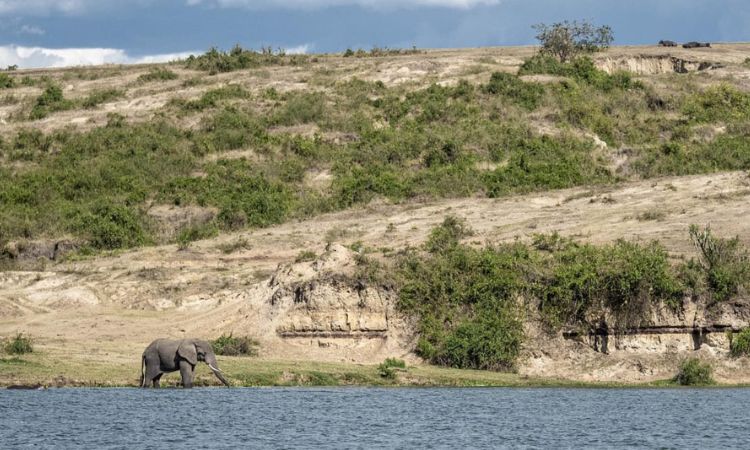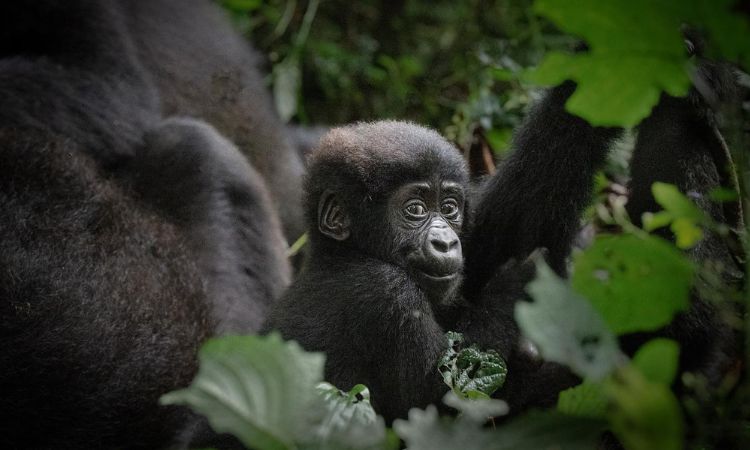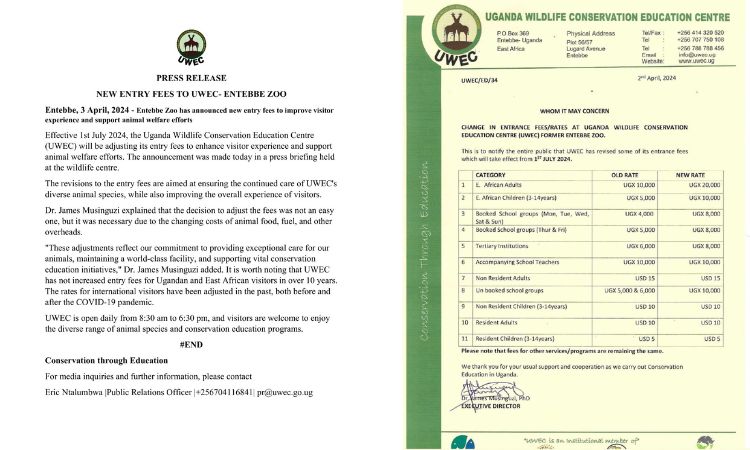Bwindi Weather 2026: Best Time for Gorilla Trekking in Uganda
Bwindi Weather: Discover the Bwindi weather and best time to visit Uganda’s gorilla paradise. Learn about monthly temperatures, rainfall, and the perfect seasons for gorilla trekking in Bwindi Impenetrable National Park.
Bwindi Impenetrable National Park, a UNESCO World Heritage Site nestled in southwestern Uganda, is renowned worldwide for its mountain gorilla trekking adventures.
Home to nearly half of the world’s remaining mountain gorillas, this ancient rainforest draws thousands of travelers annually.
Understanding Bwindi weather is crucial for planning a successful safari, as the park’s Bwindi climate Uganda features high humidity, frequent mists, and variable rainfall due to its elevation ranging from 1,160m to 2,600m.
The Bwindi temperature typically hovers between 7°C and 20°C year-round, creating a cool, tropical highland environment. Unlike other East African destinations with clear dry and wet seasons, Bwindi Impenetrable Forest weather remains consistently humid with no extreme dry periods. Rainfall averages 1,400–2,400mm annually, influencing trail conditions and gorilla sightings.
Whether you’re searching for the best time to visit Bwindi or tips on Bwindi gorilla trekking weather, this guide covers everything. At All Uganda Safaris, we specialize in curated gorilla safaris, ensuring you experience Bwindi at its finest.
Overview of Bwindi Climate
Bwindi Impenetrable National Park boasts a tropical highland climate characterized by cool temperatures, high humidity, and abundant rainfall.
The average temperature in Bwindi ranges from 7°C at night to 20°C during the day, making it cooler than lowland Ugandan areas.
Mornings often start with dense fog rolling through the Bwindi rainforest weather, clearing by mid-morning to reveal lush greenery.
Annual Bwindi rainfall varies by sector but generally exceeds 1,500mm, supporting the park’s impenetrable vegetation. Bwindi weather patterns include short afternoon showers even in drier months, so flexibility is key.
This weather in Bwindi Uganda creates ideal habitats for gorillas, who thrive in the moist, forested slopes. For travelers booking with All Uganda Safaris, knowing these Bwindi climate nuances helps select the optimal best time to visit Bwindi Impenetrable National Park.

Bwindi Weather by Month (2026)
To optimize your gorilla trekking plans, here’s a detailed Bwindi weather by month breakdown for 2026. This table highlights Bwindi temperature, Bwindi rainfall, conditions, and recommended activities.
|
Month |
Avg. Temp (°C) |
Rainfall (mm) |
Conditions |
Recommended Activities |
|
Jan |
16–24 |
80 |
Warm, mostly dry |
Gorilla trekking, habituation |
|
Feb |
16–25 |
90 |
Short dry spell |
Trekking & photography |
|
Mar |
15–23 |
150 |
Start of rains |
Fewer tourists, birding |
|
Apr |
14–22 |
200 |
Wettest month |
Budget travel, lush scenery |
|
May |
14–21 |
180 |
Heavy rains |
Discounted safaris |
|
Jun |
13–22 |
100 |
Dry season start |
Best trekking conditions |
|
Jul |
13–22 |
90 |
Dry, cool |
Prime gorilla trekking |
|
Aug |
14–23 |
110 |
Moderate rains |
Great weather for hikes |
|
Sep |
15–23 |
140 |
Light rains |
Good trekking, clear views |
|
Oct |
15–22 |
180 |
Rainy |
Fewer crowds, discounts |
|
Nov |
15–23 |
160 |
Showers |
Birding, photography |
|
Dec |
15–24 |
100 |
Dry, festive |
Peak travel, family safaris |
June–September and December–February emerge as the best time to visit Bwindi for dry trails and comfortable Bwindi gorilla trekking weather. Conversely, March–May and October–November offer Bwindi weather with heavier rains but lower costs and fewer crowds—perfect for budget-conscious adventurers with All Uganda Safaris.
Best Time to Visit Bwindi for Gorilla Trekking
The best time to visit Bwindi aligns with drier periods: June–September and December–February. During these months, Bwindi Impenetrable Forest weather features lower Bwindi rainfall, making muddy trails manageable and enhancing photography opportunities. Gorilla families are often easier to track in open areas during cooler, dry conditions.
Wet seasons (March–May, October–November) transform the park into a verdant paradise, though slippery paths challenge trekkers. Benefits include discounted gorilla permits (around $450 vs. $700 in peak) and intimate encounters with fewer tourists. Gorillas descend to lower altitudes in heavy rain, potentially shortening trek durations.
For personalized itineraries, explore our 3 Days Bwindi Gorilla Safari or 5 Days Bwindi & Kibale Safari. Learn more about Cost of Gorilla Trekking in Uganda 2026.
Temperature and Rainfall by Region
Bwindi weather varies across sectors due to elevation differences:
- Buhoma weather (North, 1,500m): Warmest and slightly drier, with Buhoma temperature averaging 18–25°C. Ideal for first-time trekkers.
- Ruhija climate (East, 2,300m+): Coolest sector; Ruhija temperature drops to 7–15°C at night with frequent mists.
- Rushaga temperature & Nkuringo (South): Higher Rushaga rainfall (up to 2,400mm) and cooler evenings, but excellent for multiple gorilla families.
These regional Bwindi climate Uganda variations allow All Uganda Safaris to tailor trips—choose Buhoma for comfort or Ruhija for birding enthusiasts.
What to Pack for Bwindi Weather
Packing for Bwindi Impenetrable National Park weather ensures comfort amid unpredictable conditions:
- Lightweight rain jacket or poncho
- Waterproof hiking boots with ankle support
- Long-sleeved shirts and trousers (tuck into socks against ants)
- Warm fleece or sweater for chilly evenings
- High-DEET insectan repellent and sunscreen
- Camera with rain cover
- Gardening gloves for gripping vegetation during treks
- Daypack with water and snacks
What to Wear for Gorilla Trekking in Bwindi
Opt for earth-toned, breathable clothing. Layering is essential: start with moisture-wicking base layers, add a fleece mid-layer, and top with a waterproof shell. Gaiters protect against mud in wet Bwindi weather.
How Bwindi Weather Affects Gorilla Trekking
Rainy Bwindi gorilla trekking weather creates slippery, steep trails but enriches the forest’s biodiversity—gorillas feed on fresh shoots, staying lower and visible. Dry months offer firmer paths but attract peak crowds; book permits 6–12 months ahead via Uganda Wildlife Authority (UWA).
In misty conditions, sound travels farther, aiding tracker communication. Always heed guides from All Uganda Safaris for safety.

Travel Tips Based on Weather
- Trek early (8 AM briefing) to avoid afternoon showers common in weather in Bwindi Uganda.
- Carry rain gear year-round; even “dry” months see 80–100mm Bwindi rainfall.
- Layer clothing: mornings hit 10°C, afternoons warm to 22°C.
- Choose lodges near trailheads (e.g., Buhoma Lodge) to minimize rain delays.
- Hydrate well—high altitude amplifies dehydration despite cool Bwindi temperature.
For broader planning, check our guide on Best Time to Visit Uganda.
FAQs
What is the weather like in Bwindi Uganda?
Bwindi weather features cool, humid conditions with average temperatures of 7–20°C and 1,400–2,400mm annual rainfall. Mists and showers are common.
When is the best time to visit Bwindi for gorilla trekking?
June–September and December–February offer the driest Bwindi gorilla trekking weather for comfortable trails.
Does it rain every day in Bwindi?
No, but short showers occur frequently, even in drier months. Prepare for variable Bwindi Impenetrable Forest weather.
What should I wear for gorilla trekking in Bwindi?
Waterproof boots, long pants, layered clothing, and rain gear suit the muddy, cool Bwindi climate.
How cold does it get in Bwindi Impenetrable Forest?
Nights drop to 7°C, especially in higher sectors like Ruhija. Pack warm layers for Bwindi temperature fluctuations.



